
Take-Aways
Breadth metrics were weaker over the past week of trading. All Advance/Decline Lines are below their respective 50-day moving averages, and new lows on the NYSE are beginning to reverse their downtrend from June. Twenty-day data is nearing washed-out levels while intermediate and long-term metrics worsen. Should the June lows in the S&P 500 be tested, we want to see breadth metrics at stronger levels than what was seen at that time to indicate less selling intensity.
NYSE Breadth
The NYSE Advance/Decline Line has fallen further below its 50-day moving average over the past week and is now threatening a retest of the summer lows. The S&P 500 finds itself in a similar position. Should the A/D Line break to new lows for the cycle, it would increase the odds that the S&P 500 will do the same.
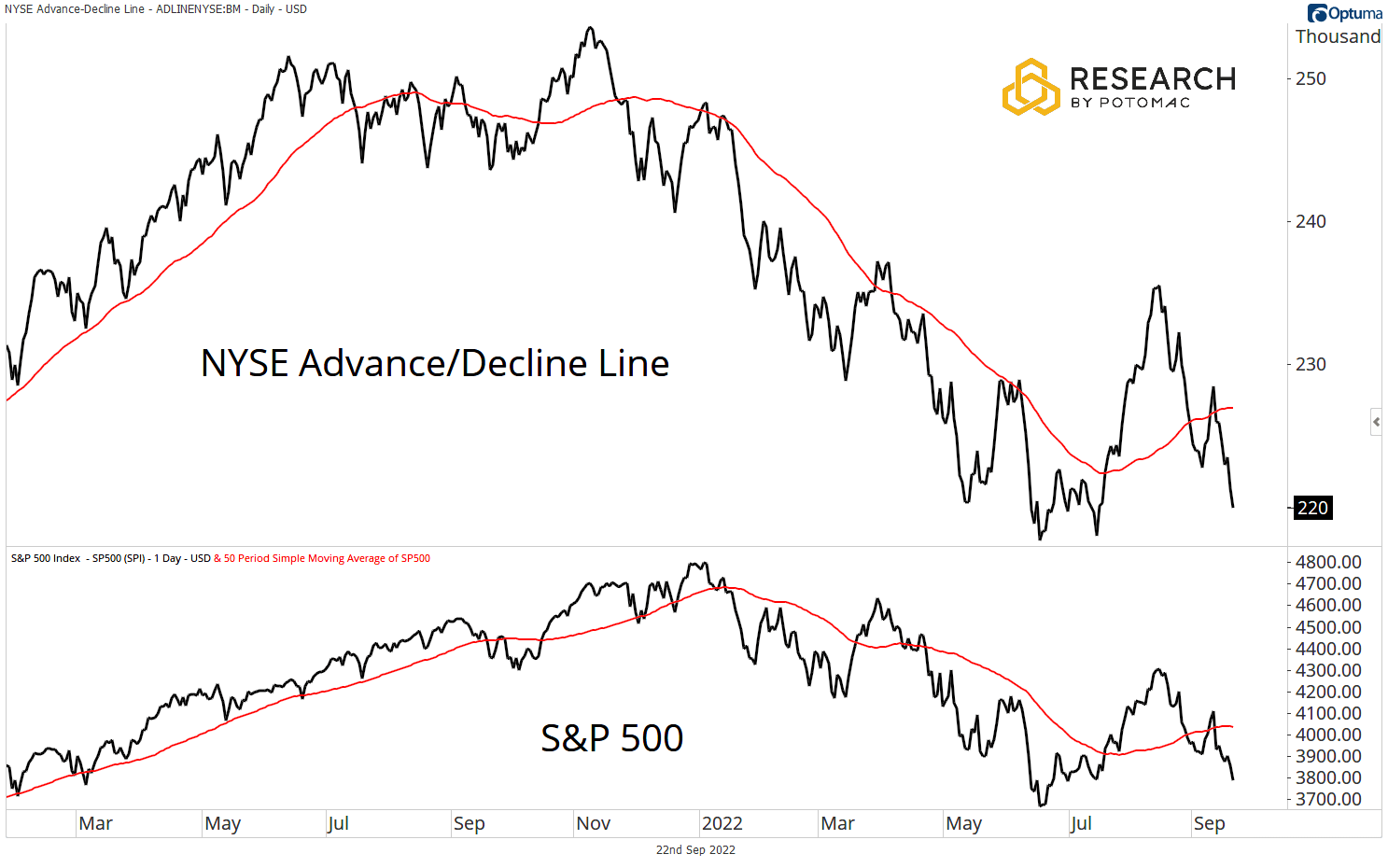
The five-day moving averages of issues on the NYSE making new 52-week and six-month lows have reversed higher. This build-up in new lows is not a welcome development for equity bulls who want to see these metrics at depressed levels to have the conviction that rallies will have staying power.
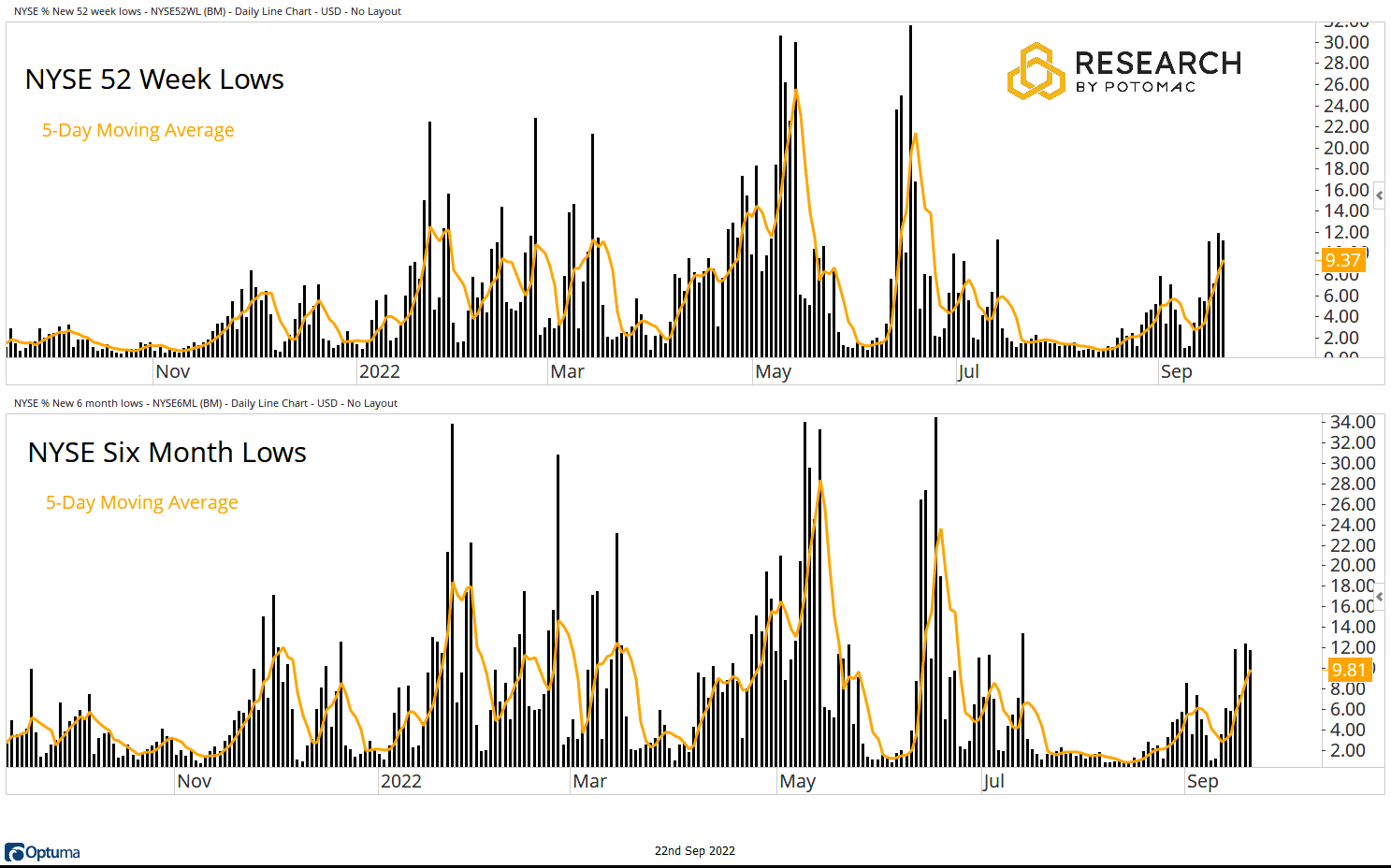
The five-day moving averages of stocks on the NYSE making new six-month and 52-week highs have moved lower once again. Both metrics are back below 1%, and the downtrend since the November 2021 peak remains in place.
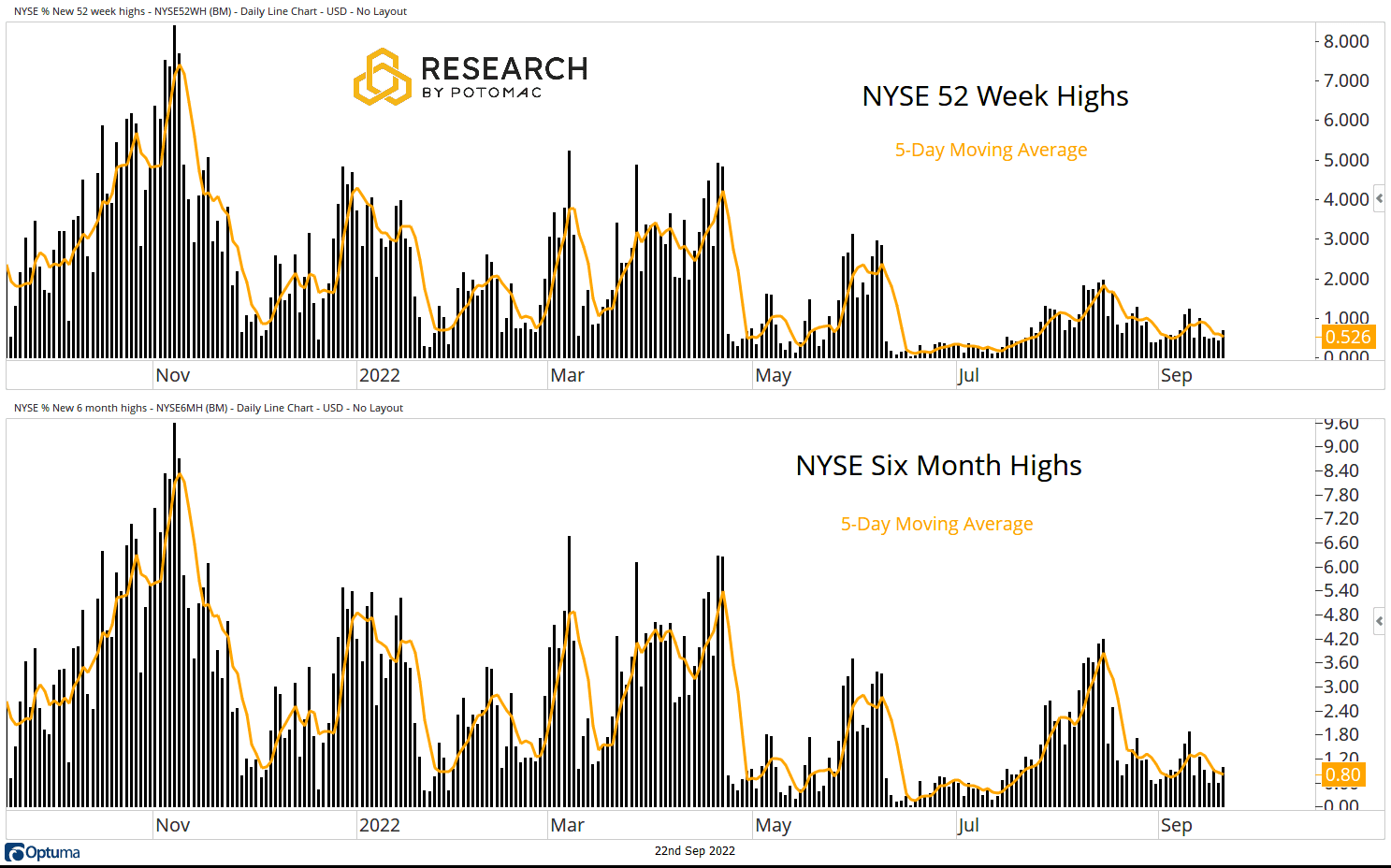
The percentage of NYSE issues trading above their respective 200-day moving averages moved to 17% this week, down from 22%. The S&P 500 remains below its 200-day moving average. The bears still control the long-term trend.
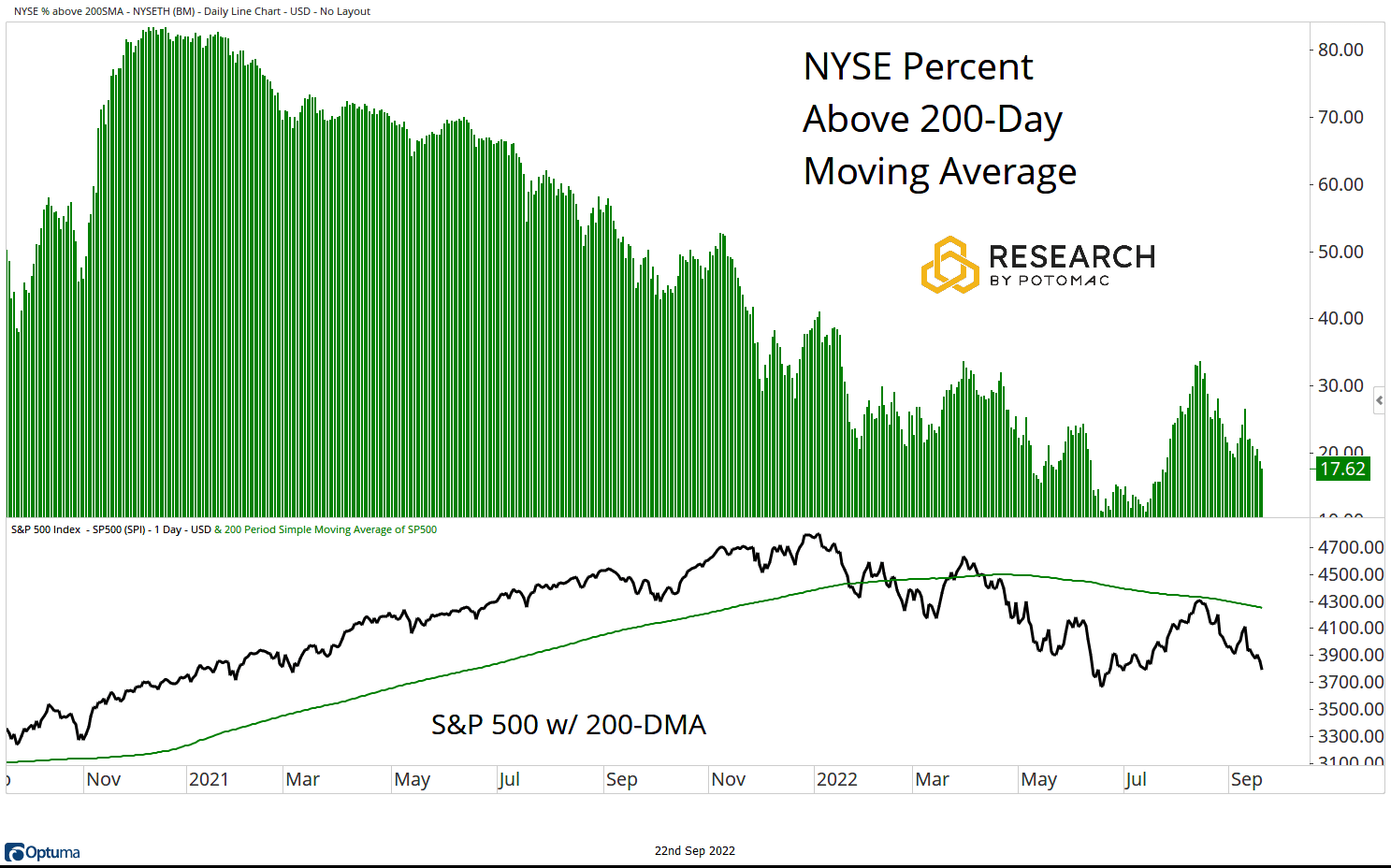
The percentage of NYSE issues trading above their respective 50-day moving averages moved to 19% from 35% last week. The S&P 500 is below its 50-day moving average.
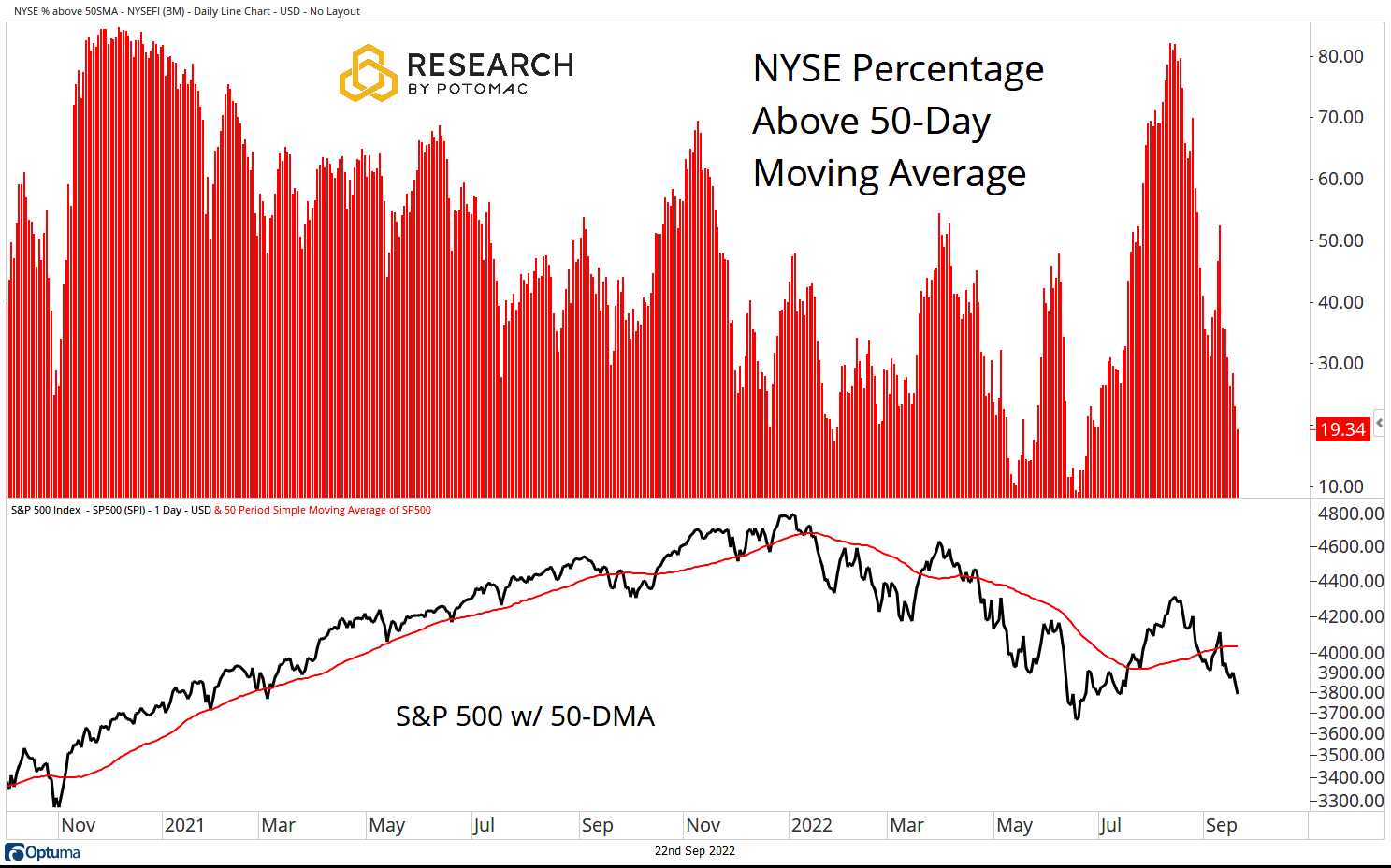
The percentage of issues on the NYSE trading above their respective 20-day moving averages fell to 14% this week from 28% last week. The S&P 500 closed below its 20-day moving average. Readings below 10% have generally signaled short-term washout conditions this year.
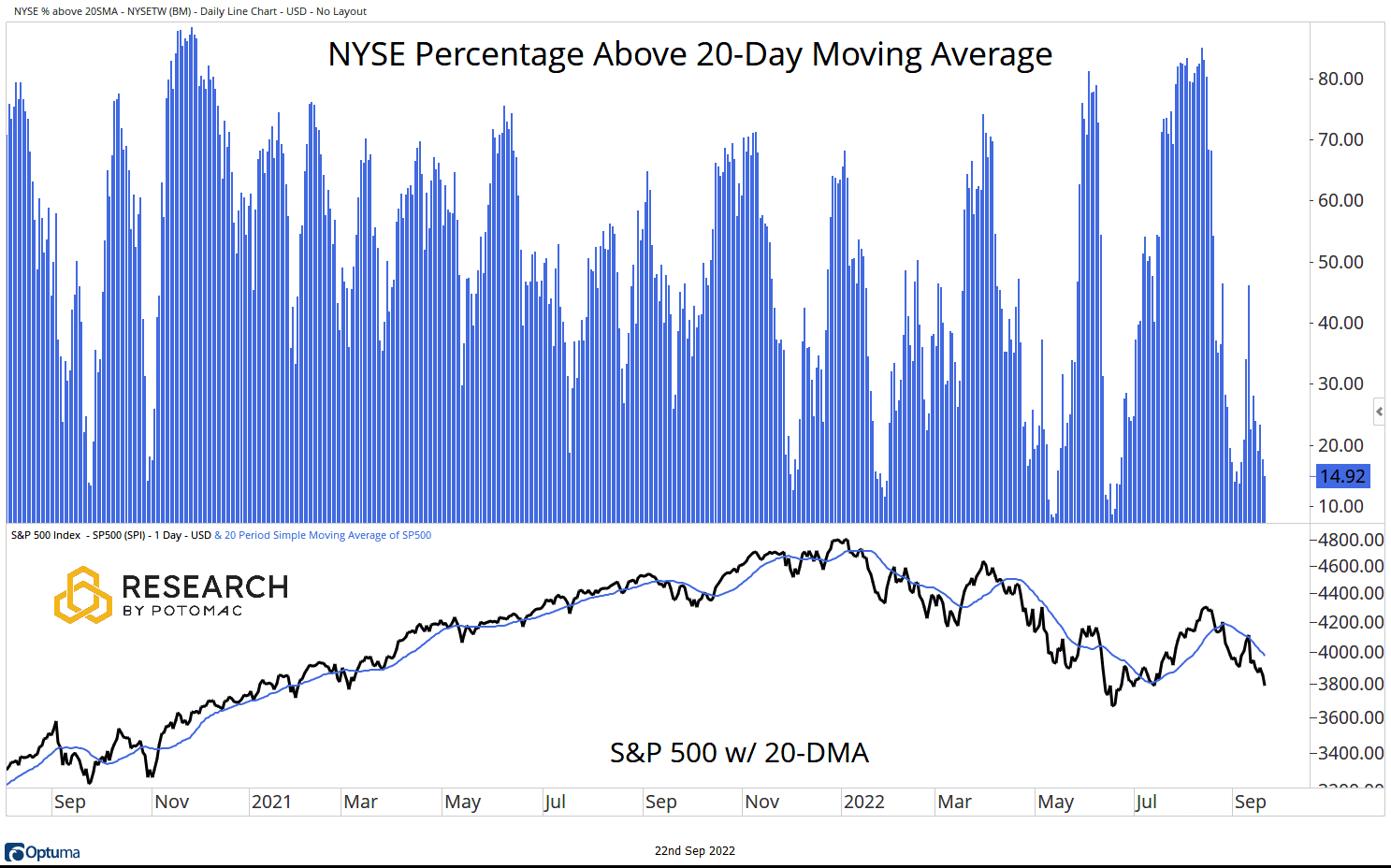
S&P 500 Breadth
Breadth metrics for the S&P 500 were weaker on the week.
- Advance/Decline Line: Below the 50-day moving average.
- Percent Above Their 200-Day Moving Average: 19% from 29% last week.
- Percent Above Their 50-Day Moving Average: 14% from 35% last week.
- Percent Above Their 20-Day Moving Average: 6% from 22% last week.
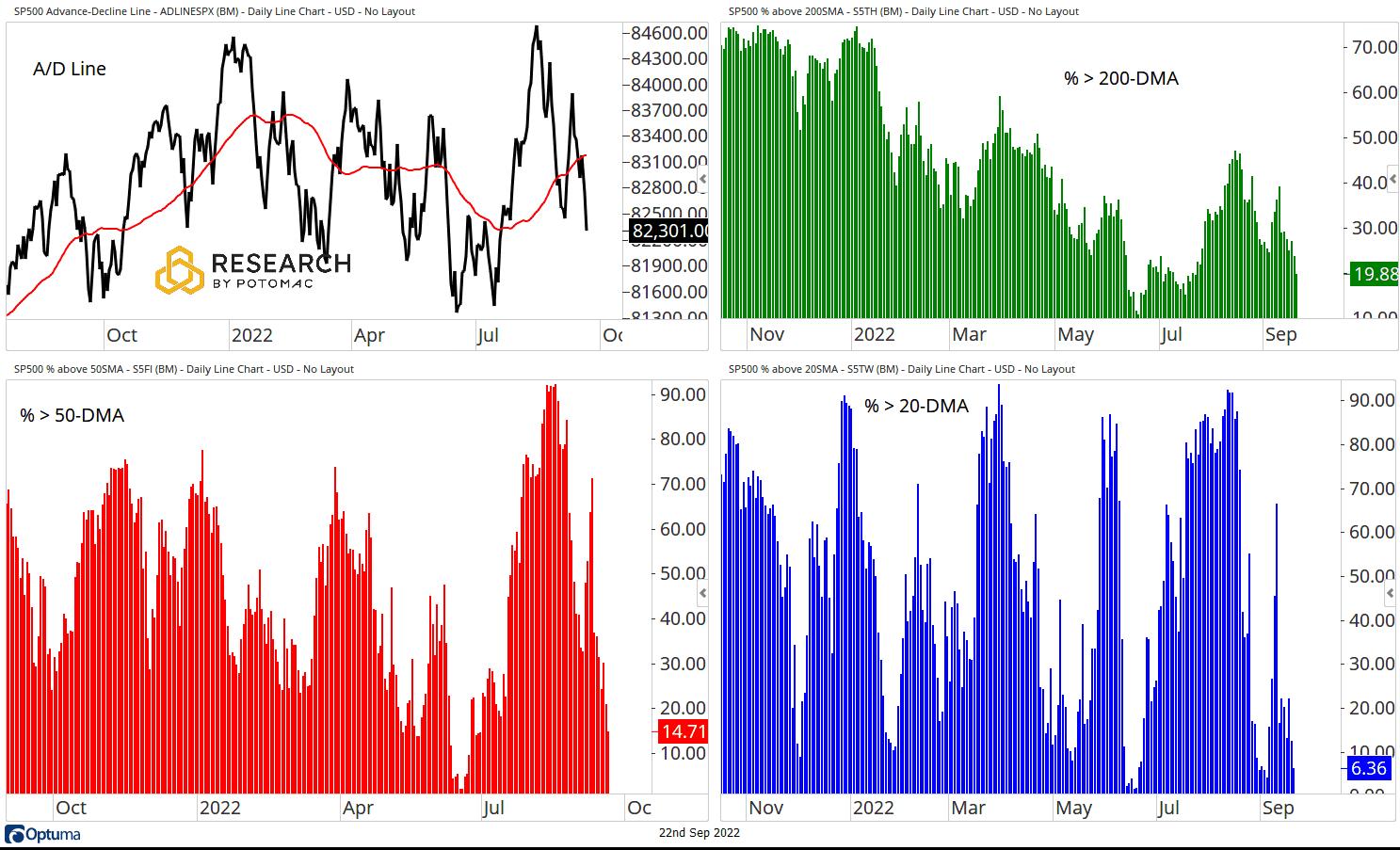
Small Cap Breadth
Breadth metrics for the S&P 600 Small Cap Index were weaker this week.
- Advance/Decline Line: Below the 50-day moving average.
- Percent Above Their 200-Day Moving Average: 19% from 24% last week.
- Percent Above Their 50-Day Moving Average: 14% from 24% last week.
- Percent Above Their 20-Day Moving Average: 13% from 15% last week.
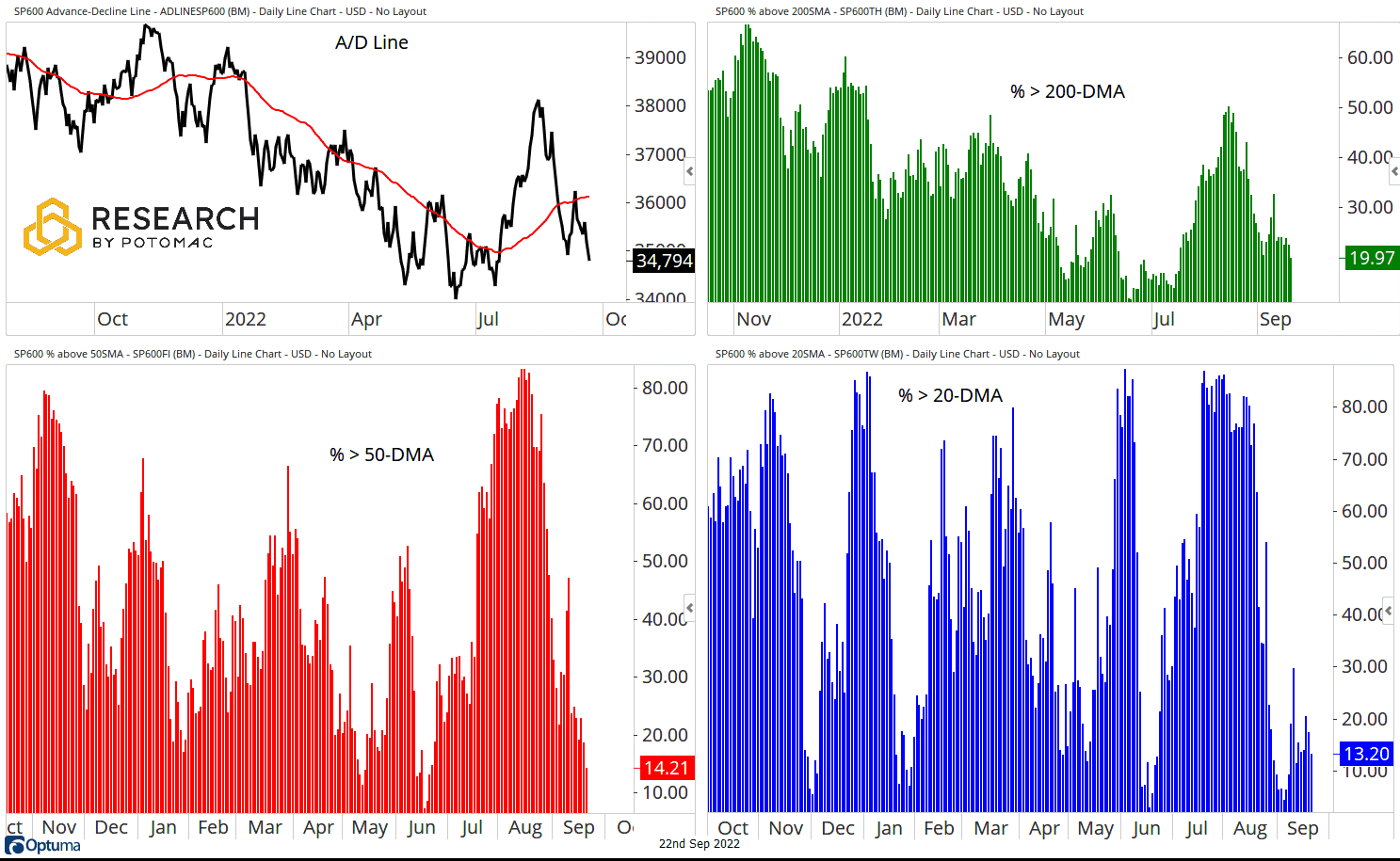
NASDAQ 100 Breadth
Breadth metrics for the NASDAQ 100 have weakened this week.
- Advance/Decline Line: Below the 50-day moving average.
- Percent Above Their 200-Day Moving Average: 10% from 21% last week.
- Percent Above Their 50-Day Moving Average: 11% from 23% last week.
- Percent Above Their 20-Day Moving Average: 6% from 18% last week.
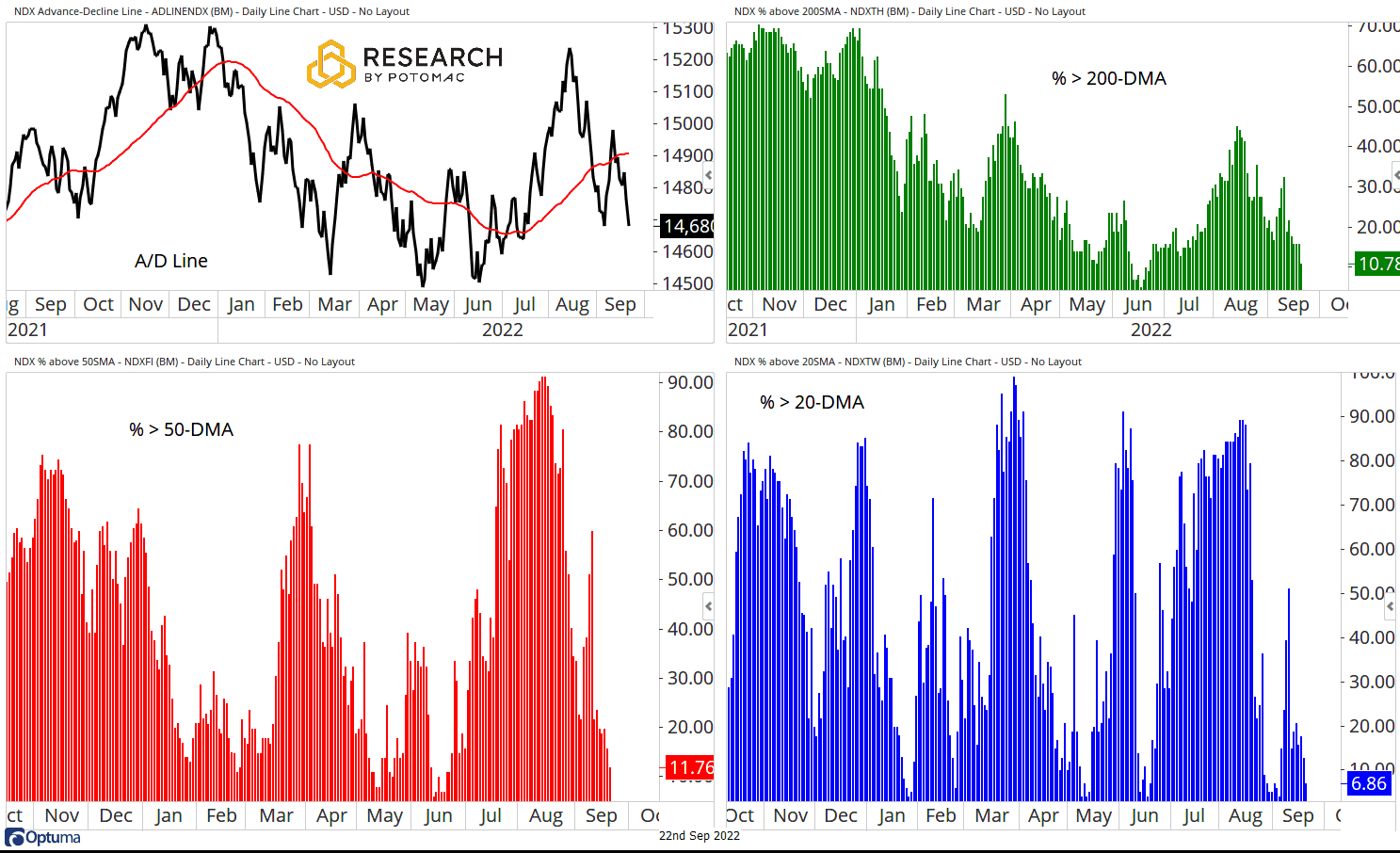
Potomac Fund Management (“Company”) is an SEC-registered investment adviser. This information is prepared for general information only and should not be considered as individual investment advice nor as a solicitation to buy or offer to sell any securities. This material does not constitute any representation as to the suitability or appropriateness of any investment advisory program or security. Please visit our FULL DISCLOSURE page. The company does not make any representations or warranties as to the accuracy, timeliness, suitability, completeness, or relevance of any information prepared by any unaffiliated third party, whether linked to the Company website or incorporated herein, and takes no responsibility for any of this information. The views of the Company are subject to change and the Company is under no obligation to notify you of any changes. Different types of investments involve varying degrees of risk, and there can be no assurance that the future performance of any specific investment or investment strategy will be profitable or equal to any historical performance level.
